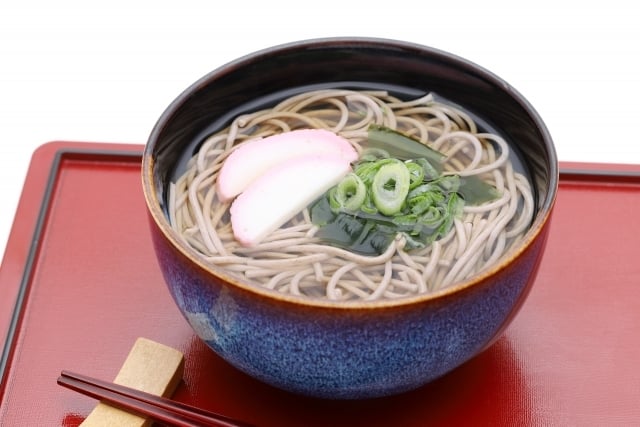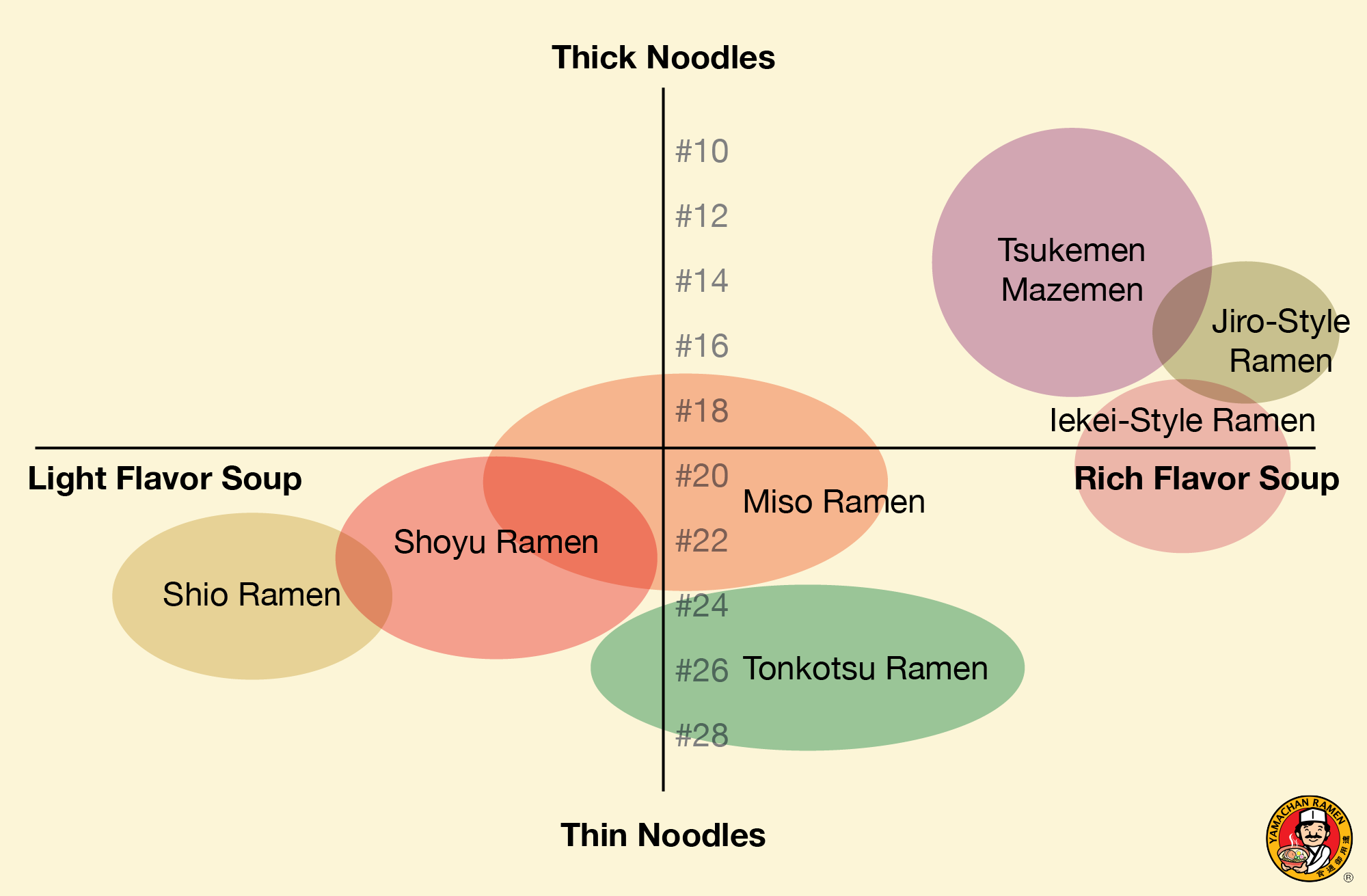Everything About "Soba," the Buckwheat Noodles Sustaining Japanese Cuisine
Other Noodles
Soba, cherished by the Japanese since ancient times, is one of Japan's leading traditional foods, backed by a long history and diverse regional cultures. In recent years, it has also gained attention overseas as a gluten-free food. (Note: Except for "Juwari soba," which will be described later, most soba contains wheat flour, so it is not completely gluten-free.)
This article will systematically introduce the essence and allure of soba, from its origins and regional characteristics to its raw materials, nutrition, and cooking methods.
The Origin and History of Soba
The origin of soba is believed to be Central Asia, in what is now southwestern China, and it was introduced to Japan during the Jomon period (c. 14,000–300 BCE). Soba pollen dating back 9,300 years has been discovered in Kochi Prefecture, and 3,000-year-old seeds have been found in Saitama City. Records of soba also appear in documents from the Nara period (710–794 CE). Initially, it is thought that the grains were boiled and eaten as a porridge. By the Heian period (794–1185 CE), soba was featured in waka poems and had become familiar to the common people.
In the Middle Ages, as part of Buddhist vegetarian cuisine (shojin ryori), "sobagaki"—a traditional soba dish made by kneading buckwheat flour with hot water or water, considered the prototype of modern soba—became widespread. With advancements in milling technology, soba became established as a highly nutritious staple food. During famines, it was also prized as an emergency food that sustained the lives of farmers.
During the Edo period (1603–1868 CE), "soba-kiri" (cut soba noodles) emerged and became widely popular among commoners and samurai alike. Many famous soba restaurants appeared, and a distinct soba shop culture developed. Concurrently, unique regional soba dishes were born. As white rice became more prevalent, soba also served as an important nutritional source to combat beriberi (a thiamine deficiency).

Soba Flour and Noodle-Making Technology: The Material Defines the Taste
The main ingredient of soba is "soba-ko" (buckwheat flour), made by milling buckwheat groats. It is classified as follows based on the milling method:
- Ichiban-ko (Sarashina-ko): White flour milled from the center of the endosperm. It has a delicate flavor, a crisp texture, and a smooth feel, offering an elegant taste.
- Niban-ko (Hikigurumi): Contains the endosperm and germ, offering a rich aroma and flavor with a good balance of taste and texture.
- Sanban-ko (including the outer layer): Flour from the part closer to the husk, darker in color and coarser, with a strong, toasty aroma but weaker elasticity.
Since buckwheat flour alone can result in brittle noodles, "Nihachi soba" (typically 20% wheat flour and 80% buckwheat flour) is common. "Juwari soba" (100% buckwheat flour) has a richer flavor, allowing one to enjoy the authentic taste of buckwheat, and is 100% gluten-free.
Nutritional Value and Functionality of Soba
Soba is a food that contains a good balance of nutrients beneficial to our health. In addition to carbohydrates, it supplies high-quality protein that, despite being plant-based, is rich in essential amino acids. It is also abundant in B vitamins (B1, B2, niacin), minerals such as iron, magnesium, and zinc, and dietary fiber, which helps with fatigue recovery and improves intestinal health.
Particularly noteworthy is "rutin," a type of polyphenol expected to have antioxidant effects and strengthen capillaries. Soba also contains resistant starch, a type of starch that is difficult to digest, which helps regulate the intestinal environment and contributes to a lasting feeling of fullness.
Soba is also a low-GI food, meaning it suppresses rapid spikes in blood sugar levels, and is thus expected to be effective in preventing diabetes. Furthermore, rutin and resistant starch contribute to improving cholesterol levels, and along with B vitamins and antioxidant components, they also contribute to maintaining heart and vascular health.
Due to these characteristics, soba is gaining attention not only for its deliciousness but also as a functional food that supports daily health maintenance.
Versatile Cooking Methods for Soba
Soba is a highly flexible food that can be enjoyed throughout the seasons, with a wide range of preparations from classic dishes to creative arrangements. "Zaru Soba," where cold soba is served on a bamboo draining basket (zaru) and dipped into tsuyu (dipping sauce), and "Kake Soba," where soba is served in a hot dashi broth, are basic styles. "Tempura Soba" is Kake Soba topped with freshly fried shrimp or vegetable tempura, often enhanced with grated daikon radish or ginger.

Among unique variations, "Soba Peperoncino" is popular. This is an Italian-style dish where boiled and cooled soba noodles are stir-fried with olive oil, garlic, and chili pepper, then seasoned with salt and pepper. It is popular among the younger generation as a new type of soba recipe that can be enjoyed like cold pasta.
"Soba Salad" is a refreshing dish perfect for summer, made by tossing soba with vegetables like lettuce and carrots with dressing. Adding nori seaweed or sesame seeds enhances the flavor.
Representative Regional Soba Cultures
Various regions in Japan boast unique soba dishes rooted in their local climate and customs.
The Three Great Soba of Japan are widely known as Wanko Soba from Iwate Prefecture, Izumo Soba from Shimane Prefecture, and Togakushi Soba from Nagano Prefecture.
For Toshikoshi Soba, it's common to add tempura in the Kanto region and herring in the Kansai region. Toshikoshi Soba, literally "year-crossing noodles," is a deeply rooted Japanese tradition of eating soba noodles on New Year's Eve (December 31st). The long noodles symbolize a long life and the wish to carry good fortune into the new year, while their ease of cutting is thought to represent letting go of the hardships of the past year. It's a way for families to reflect on the past year and welcome the new one.
- Wakkanai, Hokkaido: "Konbu Soba" (kelp-infused soba)
- Tsugaru, Aomori: "Tsugaru Soba" (made with gojiru – soybean paste soup – and aged)
- Morioka, Iwate: "Wanko Soba" (served in tiny, successive bowlfuls)
- Aizu, Fukushima: "Aizu Soba" (known for its aroma and firm texture), "Tachi Soba" (made without a binding agent)
- Chofu, Tokyo: "Jindaiji Soba" (developed around the Jindaiji Temple)
- Togakushi, Nagano: "Togakushi Soba" (historic soba served in small, distinctive portions called bocchi-mori)
- Ojiya, Niigata: "Hegi Soba" (smooth noodles made with seaweed as a binding agent)
- Kyoto: "Nishin Soba" (topped with sweetly simmered herring)
- Izumo, Shimane: "Izumo Soba" (served in stacked, round lacquerware containers)
- Tsushima, Nagasaki: "Tsushima Soba" (retaining the flavor of a local heirloom buckwheat variety)
- Kagoshima: "Satsuma Soba" (darker noodles made with Japanese mountain yam as a binder)

Sobayu: The Nourishing Brew in the Final Cup
Sobayu is the cloudy, hot water in which soba noodles have been boiled. Water-soluble nutrients and flavors dissolve into it, giving it a characteristic thickness. This practice began in the Shinshu region (present-day Nagano Prefecture) during the Edo (1603–1868 CE) period and became established as an efficient way to consume the nutrients from soba.
Typically, after a meal, the remaining soba tsuyu (dipping sauce) is diluted with sobayu to drink. The flavor can be varied with condiments like wasabi, green onions, or shichimi (seven-spice blend). "Sobayu-wari," where soba shochu (buckwheat distilled spirit) is mixed with sobayu, is also popular. Pouring the sobayu first helps to bring out the aroma. While it's possible to add soba tsuyu or pickled plums (umeboshi), one should be mindful of the salt content.

Among soba shochu varieties, those like "Juwari" (made from 100% buckwheat) have a strong aroma and are well-suited for sobayu-wari. Sobayu serves as a complement to soba's nutrition and flavor, forming an important part of soba culture. However, individuals with buckwheat allergies must avoid it, and those with kidney disease should consult their doctor.
The Soul of Soba Tsuyu: The Profound Flavor Born from Dashi
When discussing the charm of soba, "soba tsuyu" (the dipping sauce or broth) is indispensable, and at its heart lies "dashi" (broth). Dashi plays the crucial role of providing the umami foundation for the soba tsuyu. Umami components like glutamate from kombu (kelp) and inosinate from katsuobushi (dried bonito flakes) create a synergistic effect when combined, dramatically enhancing the flavor. The taste of the dashi varies depending on the ingredients used, and diverse flavors can be enjoyed through combinations of sababushi (dried mackerel flakes), sodabushi (dried frigate tuna flakes), niboshi (dried sardines), and dried shiitake mushrooms.
Soba tsuyu is completed by adding "kaeshi"—a concentrate made by simmering soy sauce, mirin (sweet cooking rice wine), and sugar—to this dashi. The umami of the dashi and the balanced sweetness, saltiness, and aroma of the kaeshi harmonize to create a tsuyu that maximizes the taste of the soba. Careful consideration is needed, as an imbalance where one component is too strong can spoil the soba's flavor.
Furthermore, the optimal dashi also varies depending on the temperature of the soba. For cold soba, a clean, well-defined dashi is suitable, while for hot soba, a mellow, full-bodied dashi that releases its aroma easily is preferred.

In Conclusion: A Culinary Culture Nurtured by Japan's Climate and Environment
Soba is a traditional food nurtured within Japan's environment and the lifestyles of its people. While soba has evolved diversely throughout its long history, its culture has been passed down and will continue to develop and spread globally.
Looking to bring authentic soba noodles to your restaurant in North America?
👉 [Explore our wholesale soba noodle options here.]





